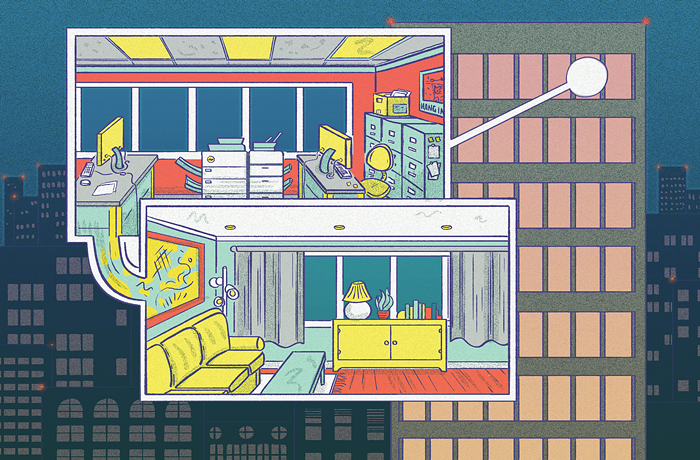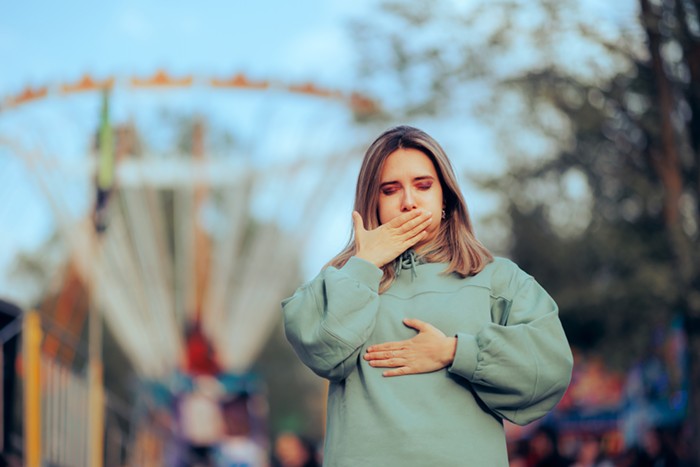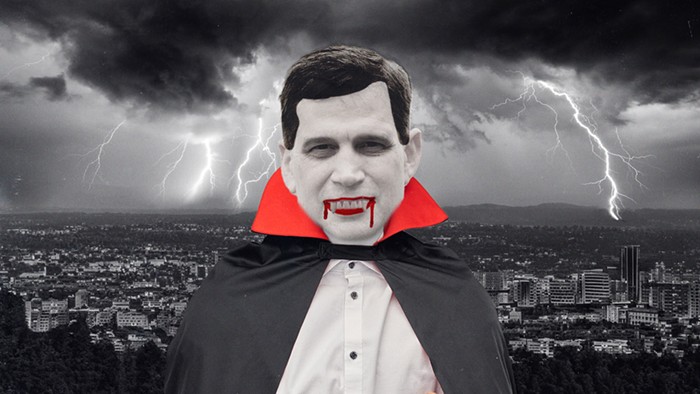
Recent talk about the likelihood of a major earthquake in Oregon—including Sarah's post yesterday—has made me acutely aware of how completely unprepared my household is for any kind of disaster. So, in the interest of combating anxiety with practical measures, this weekend my roommates and I will be putting together an emergency kit. My friend Natasha Stoudt posted extremely comprehensive instructions for doing just that on Facebook the other day—I found her instructions really useful, so I'm reposting them after the jump. (Feel free to add any other necessities in the comments.)
Hey guys! In light of the earthquake and tsunami in Japan, I wrote a status today about how important it is that everyone have an emergency kit - especially those of us here in prime earthquake territory. Someone suggested I write a note about this so that people would have the information staring them in the face right here on Facebook, so that is what I am doing.All the information I'm going to share is info that I've gleaned from various sources like the government, the Red Cross and disaster experts. I'm also going to share how I've adapted that for my own circumstances and life. What I do may not always be the ideal but it works for me - I encourage you to explore a variety of sources. Unless you are prone to getting overwhelmed and paralyzed by information, like me: in that case, just narrow your focus and do the basics. A little prepared is better than totally unprepared.
WHO: This means YOU! Every household should have an emergency kit. Not just the people I tagged. Remember: better to have these things and not need them than to need them and not have them! This note is public; feel free to share it.
WHAT: An emergency kit containing the items you would need, in an emergency, to get every member of your household through 72 hours. A week is even better. More is better still. But if you're feeling overwhelmed, just focus on those first 72 hours!
My emergency kit is a plastic tub with a tight-fitting lid, like you get from Storables or IKEA. It contains:
- a large flashlight with extra batteries
- two space blankets
- paper towels
- toilet paper
- tampons
- plastic containers (like a pack of those Ziploc ones)
- can opener
- plastic cutlery
- toothpaste
- toothbrushes (one per member of the household)
- hand sanitizer
- bottle of liquid soap
- first aid kit (a list for the contents is available at http://www.redcross.org/images/pdfs/code/First_Aid_Kit_Contents.pdf - you can also buy assembled first aid kits online or at stores like REI)
- Benadryl, Aspirin, Bactine (sometimes first aid kits only contain a small amount of this kind of stuff, so I supplement)
- "strike anywhere" matches
- a sealed plastic package of lighters
- trash bags
- a plastic drop cloth
- notebook
- pencils
- a rope
- Aqua Mira water treatment drops
- plastic ziploc bags
- a gas shut-off wrench (VITAL if you have gas heat or appliances, or if your neighbors do. And learn how to use it!)
- a hand-crank radio that will also charge electronics (only $12 online!)
- a spare pair of glasses (don't forget this, nearsighted folks!)
- a water bottle (like a Nalgene or Kleen Kanteen, one per person - depending on how you decide to store water)
- photocopies of important documents, like birth certificates, passports, marriage license, etc
- a list of what is in the kit, and some other information like places that I've stored other items (i.e., Leatherman and extra flashlight are in the junk drawer)
This sounds like a lot, but it fits with room to spare in a plastic tub that I can carry easily.
Things I don't need but you might:
- prescription medication
- baby formula (even if you breastfeed, just in case)
- diapers
- baby wipes
Near my emergency kit, I also keep:
- Our camping gear - like backpacks, sleeping bags, our tent, warm clothing, et cetera. If you do not have these things, not to worry, but get a small backpack for your kit, and at least a warm hat and socks/shoes. We also keep a camp stove (like a Whisperlight) with extra fuel handy - if you don't have one, consider getting one, but if you can't get one that's OK. It will just impact your food choices.
- Pet food, enough for all our pets for several days.
- Carriers for our cats. If you have dogs, put leashes in your emergency kit, plus any medications your pets may need.
Water:
- You'll need 1 gallon per person per day, and don't forget extra for your pets, and even more if you plan on cooking.
- Currently I have purchased bottled water on hand, but I'm switching to 30 gallon water barrels because the water lasts longer and it will ultimately be cheaper. If that sounds crazy and difficult just buy bottled water. Remember it doesn't last forever, you will have to switch it out. Don't refill plastic milk or juice jugs with water; the plastic is not meant to be reused and will degrade.
Food:
Some people keep canned food in their kits. I do not, because we always have a lot of dry goods and some canned goods and other edibles like nut butters on hand. Whatever you choose to do, make sure you always have enough food in your house to get the members of your household through at least 72 hours. Remember that unless you have water and a way to cook, things like rice and pasta will not be usable, so plan for power and gas outages.
Miscellaneous:
- I also keep kitty litter and chicken feed around. It would suck to run out of kitty litter, and wouldn't the chicken eggs be a nice source of food to keep on having during an emergency?
WHEN: You can't do it too soon, but if you are low on cash and can't buy all this stuff at once, not to worry! Buy it a little at a time and fill your bin gradually. Get water FIRST. Space blankets and shut-off wrenches are cheap. Buy an extra toothbrush and toothpaste next time you're at the grocery store. Et cetera. Remember, a little prepared is better than not at all!
The first time I did this, I was stocking up for 5 people and it cost me less than $75 (not counting the camping equipment which I already had.) No excuses!
WHERE: Many people say you should keep a packed backpack with a 72 hour kit next to your bed, but I don't. Our bedroom is too small, and is also upstairs so if we were trying to leave the house quickly we would have to go downstairs anyway. I keep our kit and other items in our basement, which may not be the best place ever, but it works for us and you will probably not be able to predict exactly where in your house will be most accessible during an emergency. Find a location for your kit that works for your household and make sure EVERYONE knows where it is.
Bonus points for keeping an extra first aid kit and some space blankets in your car. I just ordered some online today.
WHY: The chances of a major (Japan-scale) earthquake happening in the next 50 years in our region are high enough that we need to take the possibility seriously. In that case, we could be without gas, electricity and running water for some time before aid is able to arrive. Most of us will survive even a massive earthquake, but in the aftermath, we are going to need to be prepared to take care of ourselves and each other.
The same stuff will get us through any number of other kinds of emergencies, too.
HOW: Most of this stuff is basic stuff you can pick up at Fred Meyer or Target. When I did my first emergency kit shopping I just went out and took about 2 hours to round up most of this stuff. (Remember my mantra? A little prepared is better than not prepared at all!) I ordered the shut-off wrench, the hand-crank radio, and my water barrels online.
The easiest way to go about this is probably to pick up the easiest stuff all in one go, and then assemble the rest of the kit piece by piece, as you can afford and locate those items. The internet is a great resource for all things survival-related.Keep a list of the items that your kit contains in the kit, and take an inventory once a year (you can put it on your Google calendar.) Switch out the things that expire, like food, medications, batteries, and water.
Be safe and be prepared, guys!












